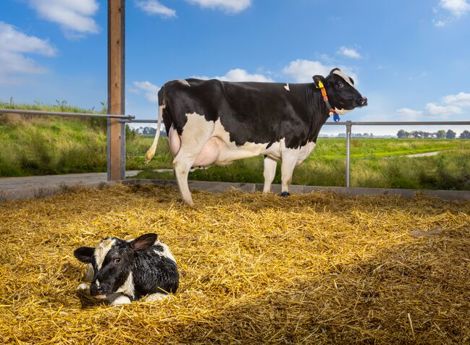Preventing ketosis: why it’s all about the dry period
Ketosis is a common yet serious health complication in dairy cows linked to the transition period between lactations. By tackling the issue head-on during the dry period, dairy farmers can take steps to prevent the condition, resulting in a healthier, more productive herd.

Ketosis occurs in calving dairy cows that have increased concentrations of blood beta-hydroxybutyrate acid (BHBA) and non-esterified fatty acids (NEFA) due to excessive levels of body fat mobilisation and impaired liver function. And it affects countless dairy farms worldwide. In fact, a recent Spanish study found evidence of the condition on 28% of farms around the country .
Though ketosis is a fairly common condition, it’s important not to underestimate the economic impact. Affected cows are likely to experience reduced milk production and poorer reproductive performance, resulting in higher rates of culling. Cows are also at increased risk of conditions such as mastitis, which can affect milk production – and ultimately your farm’s financial performance.
Tackling the root of the problem: a three-step approach
Protecting the health, productivity and fertility of your cows means going back to the source of the problem: the dry period. As shown by on-farm studies conducted by De Heus, ketosis typically results from a severe negative energy balance (NEB) due to sub-optimal dry-matter intake around calving. We know that over-conditioned cows have lower intakes during the dry period, lose more weight during early lactation and have a higher risk of developing ketosis. In other words, the dry matter intake during early lactation is simply not enough to meet the needs of high-producing cows – and this leads to a negative energy balance.
To tackle this issue, we recommend a three-step approach. The first is to increase your cows’ feed intake during the dry period, which studies have shown can have a positive impact on milk yields during lactation. Second, make sure your cows maintain an optimal body condition score (no higher than 3.5) before drying off. Our final recommendation is to shorten the dry period: a recent De Heus survey involving 37 Dutch farms found significantly lower BHBA and NEFA concentrations in cows with a shorter dry period.
At De Heus, we’ve developed the Prelacto Dry Period Plan to help you tackle each of these three steps head-on. Learn more about Prelacto or contact a member of the De Heus team for further information.
[1] Duffield TF, Lissemore KD, McBride BW, Leslie KE. Impact of hyperketonemia in early lactation dairy cows on health and production. J. Dairy Sci. 2009; 92: 571–80. pmid:19164667



